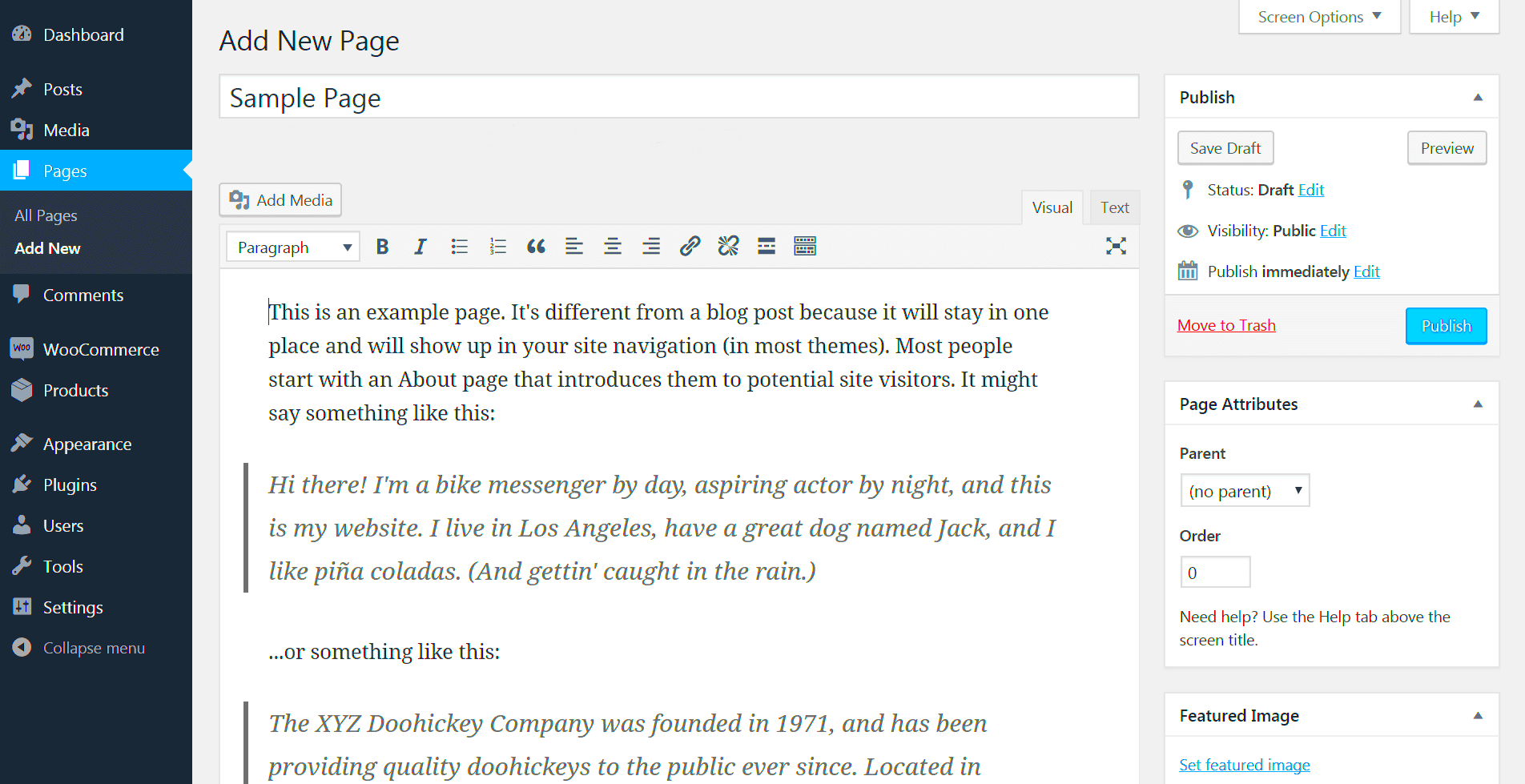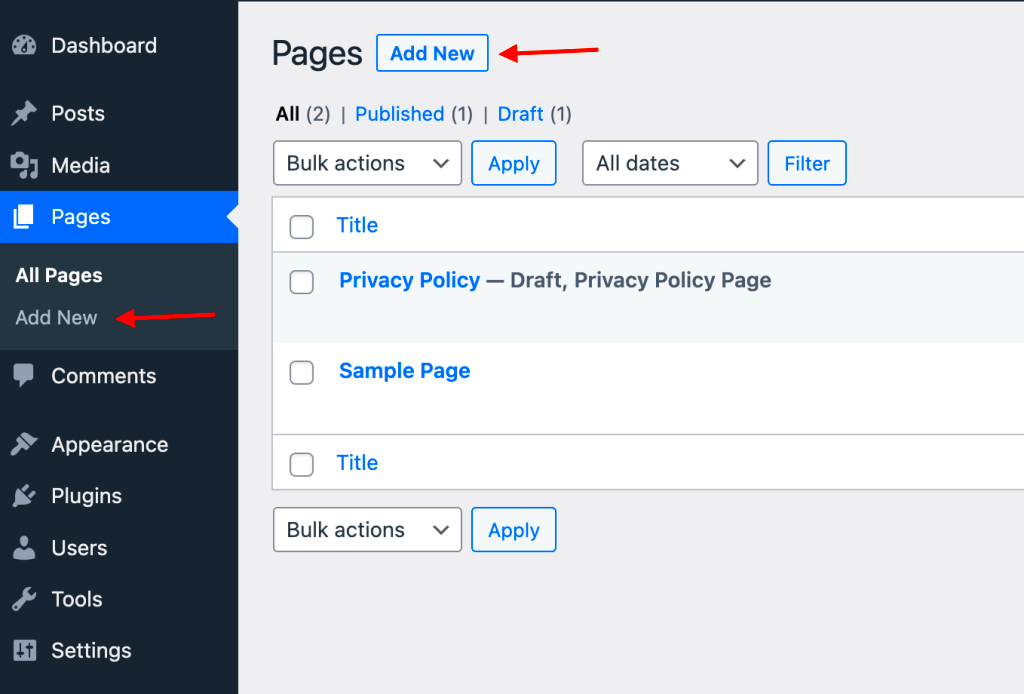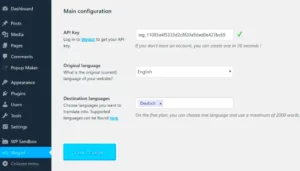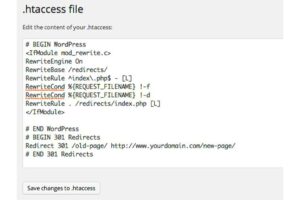WordPress is a powerful content management system that equips you with all the tools you need to create a stunning website. Among its myriad features, pages are a crucial component, allowing you to build static content that doesn’t change regularly—think “About Us,” “Contact,” or “Services” pages. These are essential for providing your visitors with important information about your site.
Creating pages with WordPress is user-friendly and intuitive. You don’t need to be a tech wizard to get started. Simply dive into your WordPress dashboard, and you’re on your way!
Understanding the Difference Between Posts and Pages

So, what’s the deal with posts and pages? They may seem similar at first glance, but they actually serve different purposes in your WordPress site. Let’s break it down:
| Feature | Posts | Pages |
|---|---|---|
| Content Type | Dynamic content (blog articles, news updates) | Static content (company info, contact, etc.) |
| Frequency of Updates | Regularly updated | Infrequently updated |
| Categories/Tags | Can be categorized and tagged | No categories or tags |
| Found in | The main blog feed | The Pages section |
| SEO Focus | More focused on timely content | More focused on evergreen content |
In a nutshell, think of posts as your blog’s heartbeat, while pages are the steady backdrop that supports your site. Understanding this difference will help you use WordPress more effectively and create a well-structured website that engages your audience. So, now that you’ve got the basics, let’s dive into creating those pages!
Choosing the Right WordPress Theme for Page Creation

When it comes to building a stunning website with WordPress, your choice of theme is crucial. Not only does it define how your site looks, but it also influences functionality and user experience. So, how do you go about choosing the *right* theme for your pages? Here are some tips to guide you:
- Consider Your Niche: Think about the industry you are in. Different niches may require different styles. For example, a photography website will need a theme that showcases images beautifully, while a corporate site may prioritize professionalism.
- Responsive Design: Ensure the theme is responsive. This means it should look great on desktops, tablets, and smartphones. With mobile browsing on the rise, a responsive theme is not just a suggestion; it’s a necessity!
- Customization Options: Look for themes that allow customization. You might want to change colors, fonts, and layouts. A theme that offers an easy-to-use customization interface can save you a lot of headaches.
- Page Builder Compatibility: If you plan on using a page builder like Elementor or WPBakery, ensure that your theme supports it. This can enhance your designing experience and allow for more creative layouts.
- SEO Friendly: Choose a theme optimized for search engines. An SEO-friendly theme can help improve your site’s visibility.
Lastly, don’t forget to read reviews and check ratings for any theme you’re considering. The right theme can set the tone for your entire website and lead to a fantastic user experience.
Step-by-Step Guide to Creating a New Page
Creating a new page in WordPress is as easy as pie when you know the steps! Follow this straightforward guide to set up your new page without a hitch:
- Log into Your Dashboard: Start by entering your WordPress admin panel. This is where you’ll manage your website content.
- Navigate to Pages: On the left-hand menu, locate the “Pages” section and click on “Add New.” This will take you to a fresh page editor.
- Enter Your Page Title: At the top, you’ll see a field where you can add your page title. Make it catchy and relevant!
- Add Content: Below the title, you’ll find a content editor. Use this area to add text, images, videos, and other media. You can format your content using the available tools.
- Utilize Blocks: If you’re using the Block Editor (Gutenberg), you can add various blocks for different content types. Simply click the “+” icon to explore options.
- Set a Featured Image: It’s a good idea to set a featured image that represents your page. On the right sidebar, look for “Featured Image” and upload your photo.
- Publish Your Page: Once you’re satisfied with your content, hit the “Publish” button to make your new page live. You can also save it as a draft if you want to come back later.
And voilà! You’ve successfully created a new page on WordPress. This process is intuitive, and with a little practice, you’ll be a pro in no time!
Utilizing Page Builders for Enhanced Design
When it comes to designing visually appealing web pages with WordPress, page builders are your best friends. They provide the flexibility and ease that traditional coding simply can’t match. Imagine dragging and dropping elements to create your perfect layout, all without writing a single line of code! Sounds fantastic, right? That’s exactly what page builders bring to the table.
Popular page builders, such as Elementor, Beaver Builder, and WPBakery, offer intuitive interfaces that streamline the design process. Here’s why you should consider using them:
- Drag and Drop Functionality: Easily add elements to your page with a simple drag and drop motion.
- Pre-built Templates: Choose from a vast library of templates that you can customize to fit your brand.
- Responsive Design Options: Ensure your website looks great on all devices, thanks to built-in responsive settings.
- Real-Time Editing: See your changes happen in real-time, allowing for instant feedback as you design.
- Advanced Styling: Enjoy advanced design options with no coding required!
With all these advantages, utilizing a page builder can significantly enhance your WordPress pages, making them stand out and function better for visitors. So, if you haven’t yet, give a page builder a try—you’ll be amazed at the creative freedom it provides!
Essential Plugins for Page Customization
Plugins are the lifeblood of WordPress, allowing you to add features and enhance functionality effortlessly. When it comes to page customization, using the right plugins can make all the difference. They help tailor your site to your specific needs and can elevate the overall user experience.
Here’s a shortlist of essential plugins you should consider for page customization:
| Plugin Name | Primary Function |
|---|---|
| Yoast SEO | Optimize your content for search engines. |
| Contact Form 7 | Create customized contact forms easily. |
| Slider Revolution | Create stunning image and content sliders. |
| Advanced Custom Fields | Manage custom fields for dynamic content. |
| WPForms | Build professional forms with a user-friendly interface. |
These plugins enhance your site’s functionality by offering features that cater to various aspects, from SEO optimization to form creation. When combined with the power of a page builder, the possibilities are virtually endless. So, don’t shy away from exploring and experimenting with these plugins to make your WordPress pages truly stand out!
7. Tips for Organizing Your Pages Effectively
When it comes to WordPress, having an organized structure for your pages is essential for both user experience and SEO. Here are some valuable tips to help you organize your pages effectively:
- Use a Clear Hierarchy: Establishing a logical hierarchy is crucial. Start with main pages like ‘Home,’ ‘About,’ and ‘Contact,’ and branch out to sub-pages as necessary. This way, visitors can easily navigate your site.
- Implement Parent and Child Pages: WordPress allows you to create parent and child pages. This feature makes it simple to group related content together, enhancing organization and helping users find what they need.
- Utilize Custom Menus: Take advantage of WordPress’s custom menu feature. You can add specific pages to your navigation bar, ensuring the most important sections are easily accessible.
- Categorize Content: Consider categorizing your pages by topics or themes. This not only assists users in finding content they care about but also benefits your site’s SEO.
- Regularly Audit Your Pages: It’s wise to review and update your pages regularly. Remove outdated content, check for broken links, and ensure the information is current.
- Link Internally: Internal linking between pages helps users explore your site further and boosts the SEO value of your content.
With these tips in mind, you’ll be well on your way to creating an organized WordPress site that’s a pleasure to navigate!
8. SEO Best Practices for WordPress Pages
Optimizing your WordPress pages for SEO is not just an option; it’s a necessity if you want to drive traffic and increase visibility. Here are some best practices to help you get started:
- Use SEO-Friendly Permalinks: Make your URLs descriptive and concise. In your settings, opt for a permalink structure that includes keywords, such as ‘Post Name.’
- Optimize Page Titles and Meta Descriptions: Both should contain primary keywords relevant to your content. Make them engaging to improve click-through rates from search engine results.
- Utilize Header Tags Properly: Use
<h1>for your main title, while<h2>,<h3>, etc., work for subheadings. This structure enhances readability and SEO. - Incorporate Alt Text for Images: Every image you add should have descriptive alt text. This not only aids SEO but also improves accessibility for visually impaired users.
- Use SEO Plugins: Tools like Yoast SEO or All in One SEO Pack simplify optimization. They guide you through best practices and help analyze your content.
- Focus on Quality Content: Ensure your content is valuable, unique, and relevant. Engaging articles lead to longer reader retention and increased sharing, which improves SEO.
By following these SEO best practices for your WordPress pages, you can create high-performing pages that will attract search engines and users alike!
9. Maintaining and Updating Your Pages
Keeping your WordPress pages fresh and engaging is crucial, not only for your audience but also for SEO. Think of your website as a garden; just like flowers need regular watering, your content requires consistent attention. Here’s how to effectively maintain and update your pages:
- Regularly Review Content: Aim to revisit your pages periodically. Check for outdated information or broken links. This practice ensures your audience receives the most accurate data.
- Update SEO Settings: As trends shift, your SEO strategies should too. Use tools like Yoast SEO to refresh your keywords and meta descriptions, so your pages remain visible in search results.
- Engage with User Feedback: Pay attention to comments and feedback from your visitors. This input can provide insights into what they like or what needs improvement. Being responsive can significantly increase user satisfaction.
- Monitor Page Performance: Use analytics tools, such as Google Analytics, to track user behavior on your pages. Identify which pages are performing well and which aren’t, then strategize improvements accordingly.
- Consider Seasonal Updates: Tie your content updates to seasonal events or relevant trends. For instance, if you’re running a blog about travel, update your pages with current hotspots for the summer vacation period.
Creating a schedule for reviews and updates can make this process smoother, ensuring that maintaining your WordPress pages doesn’t feel like an overwhelming task. A little ongoing attention often goes a long way in keeping your content lively and authoritative!
10. Conclusion and Final Thoughts
So, there you have it—your roadmap to creating and maintaining stellar pages on WordPress! Whether you’re just starting out or have a seasoned website that needs sprucing up, the strategies we’ve discussed are designed to equip you for success.
Remember, effective page creation isn’t just about slapping together some text and images; it’s about:
- Understanding Your Audience: Know who you’re talking to! Tailor your content to their interests and preferences.
- Utilizing the Right Tools: WordPress is packed with features and plugins that can enhance your pages; don’t hesitate to explore them!
- Regular Maintenance: Keep your pages updated with fresh content, as this is key to maintaining relevance and authority in your niche.
In conclusion, creating and managing WordPress pages is a dynamic and rewarding process. Staying adaptable, curious, and willing to learn will serve you well in your blogging journey. Finally, don’t forget to engage with your community. Your readers are your greatest asset, and fostering that relationship can lead to amazing opportunities!



